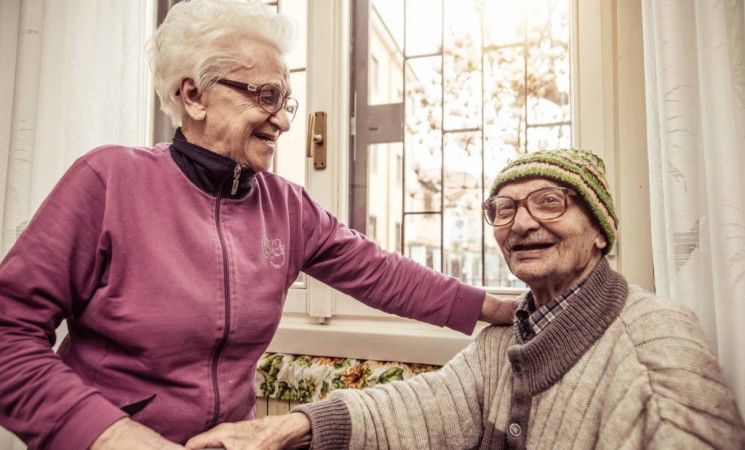Archived Content
This page is archived and provided for historical reference. The content is no longer being updated, and some of the information may have changed over time and could be outdated or inaccurate.
Risk and Resilience Factors in Elder Abuse: Lessons Learned from Other Fields
Research in elder abuse lacks standardization, particularly when it comes to identifying risk and resilience factors, understanding culture subgroups, and testing available interventions.
Elder abuse is a growing public health concern, partly because we lack comprehensive understanding of its origins and the best strategies to prevent it. To address this, the NIH hosted a workshop as part of the broader national agenda to promote elder justice, which was a focus of the 2015 White House Conference on Aging.
The workshop’s second panel focused on future research directions and risk and resilience factors of elder abuse. The moderator was Marie-Therese Connolly, J.D., a lawyer, scholar and elder justice advocate. Speakers were Karl Pillemer, Ph.D., a translational and gerontology researcher; Cathy Widom, Ph.D., a researcher in psychology and criminology; Sherry Hamby, Ph.D., a clinical psychologist and researcher; Sonia Salari, Ph.D., who studies formal aging service utilization and elder mistreatment; and Xinqi Dong, M.D., a clinician in geriatric medicine and researcher in elder mistreatment.
Elder Abuse Research: Standardizing Definitions and Advancing the Field
Panelists agreed on the need for more standardized elder abuse research, with a focus on identifying risk and resilience factors, understanding culture subgroups, and rigorously testing available interventions, as some adult protective services have not emerged from randomized controlled trials. Even long-standing practices that seem applicable to elder abuse, such as mandatory reporting, lack an evidence base.
In addition, different elder abuse definitions create discrepancies in reported prevalence rates, thus increasing confusion. Pillemer cited this example: If a wife calls her 65-year-old husband a clumsy idiot for stepping on her toe, the husband would show up as positive on some, but not all, elder abuse victimization surveys! Dong cited evidence that supports the need for standard definitions: There are at least five different published prevalence rates for psychological and other types of elder abuse, each of which depended on the definition used. To advance standardization, panelists recommended that people cite specific types of abuse or mistreatment, especially since different types of elder abuse have different health outcomes and prevention strategies.
Participants offered multiple future research directions. Pillemer underscored the need to move beyond prevalence research. Other panelists thought additional prevalence studies, with a more rigorous application of definitions, would be beneficial. However, most of the panelists agree that research should focus on identifying risk factors and developing interventions to prevent elder abuse and to treat its consequences. As interventions are developed, they should be rigorously tested in randomized controlled studies.
Risk and Resilience Factors for Elder Abuse
There was agreement that elder abuse is not necessarily an isolated event in a victim’s life.
Widom spoke about the cycle of violence, the assumption that children who were abused and neglected are violent criminals as adults more often than children who were not abused or neglected. Her own research includes a 30-year follow-up of children she studied in the 1980s and supports this idea.
Similarly, the polyvictimization model supports the idea that victims are often exposed to multiple traumas. Hamby emphasized that the main driver of victims’ distress is the cumulative burden of all types of victimization, including crimes like financial fraud that differ from interpersonal violence or abuse. In this model, the type of maltreatment experienced by someone is not as important as the total amount.
Hamby also emphasized resilience as a research area and as a means to help victims achieve wellbeing by attaining life goals, such as happiness. Rather than focus on a lack of pathology, Hamby recommends a shift to a strength-based approach that helps victims develop interpersonal strengths, such as compassion; regulatory strengths, such as emotional awareness; and meaning making, such as purpose. With such resiliency skills, people are more able to cope with adversity and likely reduce negative health effects.
Salari identified isolation as a major risk factor and suggested its prevention through social support, may be key in preventing elder abuse. Widom said that having a supportive partner throughout various points in adult life is protective against perpetuating a cycle of violence.
The panel ended on a practical note. If future research will inform policy, it’s important to remember that researchers speak about elder abuse in very granular terms, while policymakers usually speak about it more broadly. As the research field matures, researchers, practitioners, and legislators will need to speak and listen carefully when discussing research findings so we collectively can reduce elder abuse as a public health concern.
Additional Resources
Archived video of NIH’s Multiple Approaches to Understanding and Preventing Elder Abuse and Mistreatment workshop
NIH's Elder Abuse and Maltreatment workshop
2015 White House Conference on Aging
The Connector's NIH Elder Abuse Research Workshop Overview
Photo Credit: Fotolia / oneinchpunch









